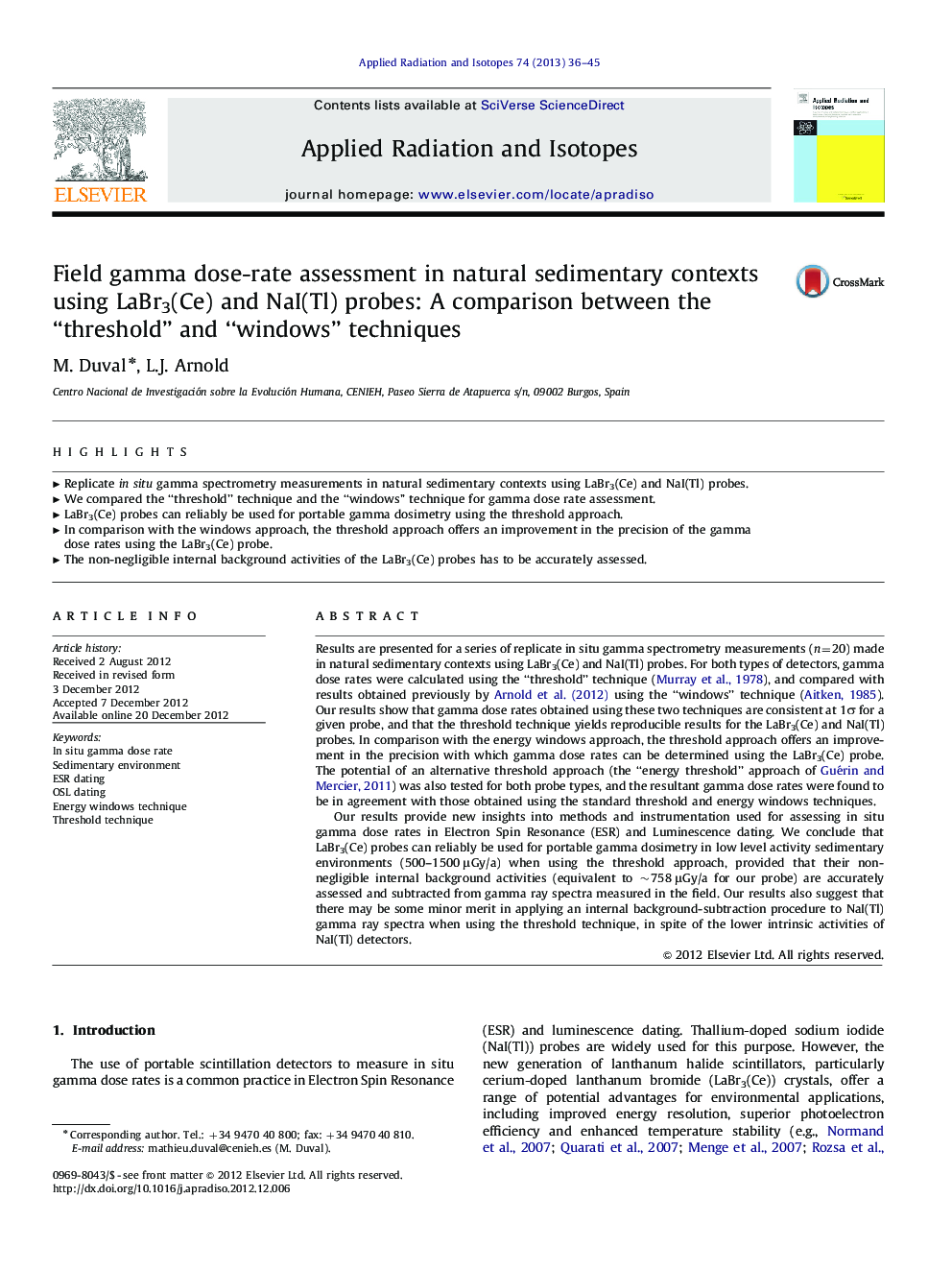| Article ID | Journal | Published Year | Pages | File Type |
|---|---|---|---|---|
| 1876012 | Applied Radiation and Isotopes | 2013 | 10 Pages |
Results are presented for a series of replicate in situ gamma spectrometry measurements (n=20) made in natural sedimentary contexts using LaBr3(Ce) and NaI(Tl) probes. For both types of detectors, gamma dose rates were calculated using the “threshold” technique (Murray et al., 1978), and compared with results obtained previously by Arnold et al. (2012) using the “windows” technique (Aitken, 1985). Our results show that gamma dose rates obtained using these two techniques are consistent at 1σ for a given probe, and that the threshold technique yields reproducible results for the LaBr3(Ce) and NaI(Tl) probes. In comparison with the energy windows approach, the threshold approach offers an improvement in the precision with which gamma dose rates can be determined using the LaBr3(Ce) probe. The potential of an alternative threshold approach (the “energy threshold” approach of Guérin and Mercier, 2011) was also tested for both probe types, and the resultant gamma dose rates were found to be in agreement with those obtained using the standard threshold and energy windows techniques.Our results provide new insights into methods and instrumentation used for assessing in situ gamma dose rates in Electron Spin Resonance (ESR) and Luminescence dating. We conclude that LaBr3(Ce) probes can reliably be used for portable gamma dosimetry in low level activity sedimentary environments (500–1500 μGy/a) when using the threshold approach, provided that their non-negligible internal background activities (equivalent to ∼758 μGy/a for our probe) are accurately assessed and subtracted from gamma ray spectra measured in the field. Our results also suggest that there may be some minor merit in applying an internal background-subtraction procedure to NaI(Tl) gamma ray spectra when using the threshold technique, in spite of the lower intrinsic activities of NaI(Tl) detectors.
► Replicate in situ gamma spectrometry measurements in natural sedimentary contexts using LaBr3(Ce) and NaI(Tl) probes. ► We compared the “threshold” technique and the “windows” technique for gamma dose rate assessment. ► LaBr3(Ce) probes can reliably be used for portable gamma dosimetry using the threshold approach. ► In comparison with the windows approach, the threshold approach offers an improvement in the precision of the gamma dose rates using the LaBr3(Ce) probe. ► The non-negligible internal background activities of the LaBr3(Ce) probes has to be accurately assessed.
